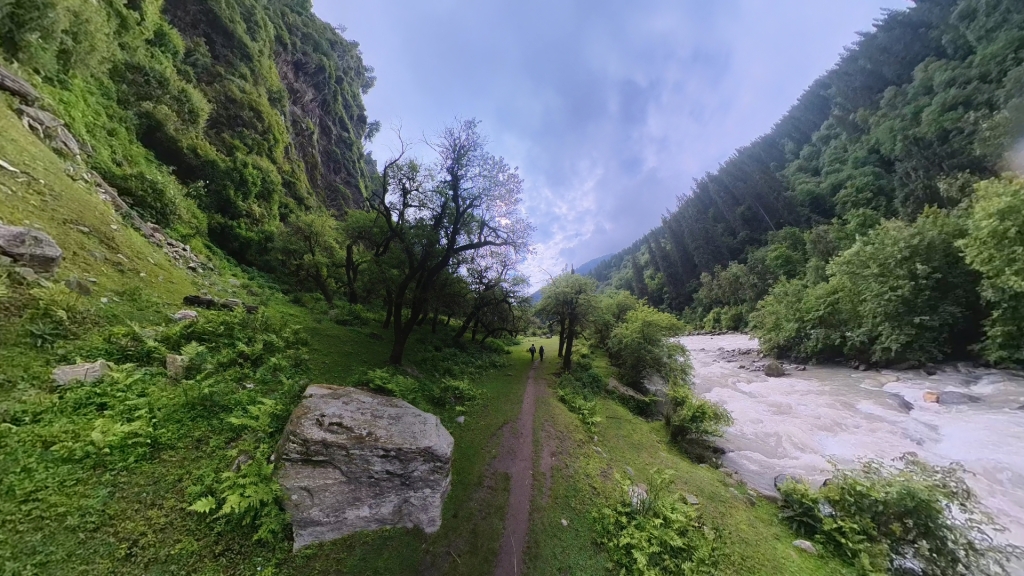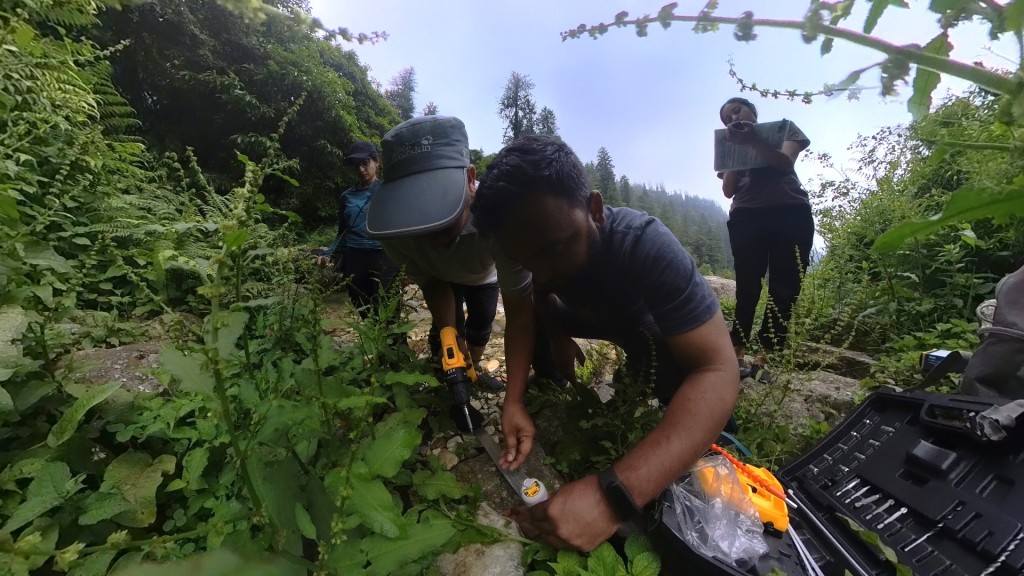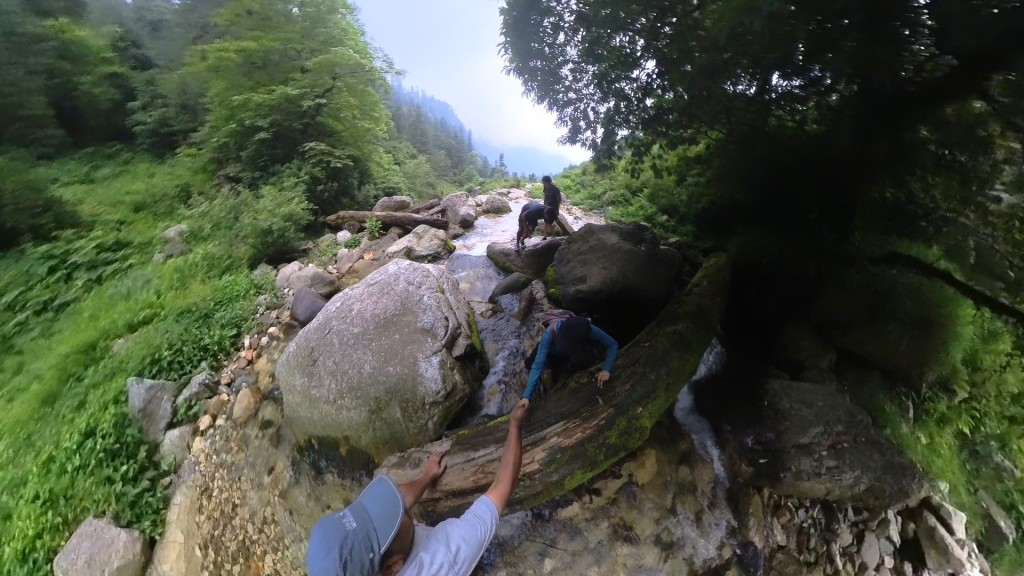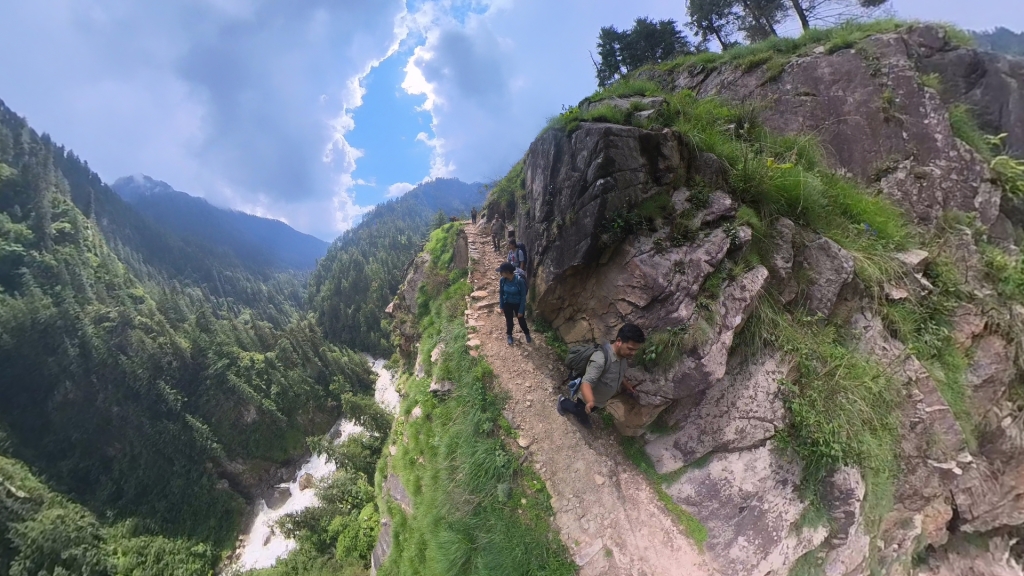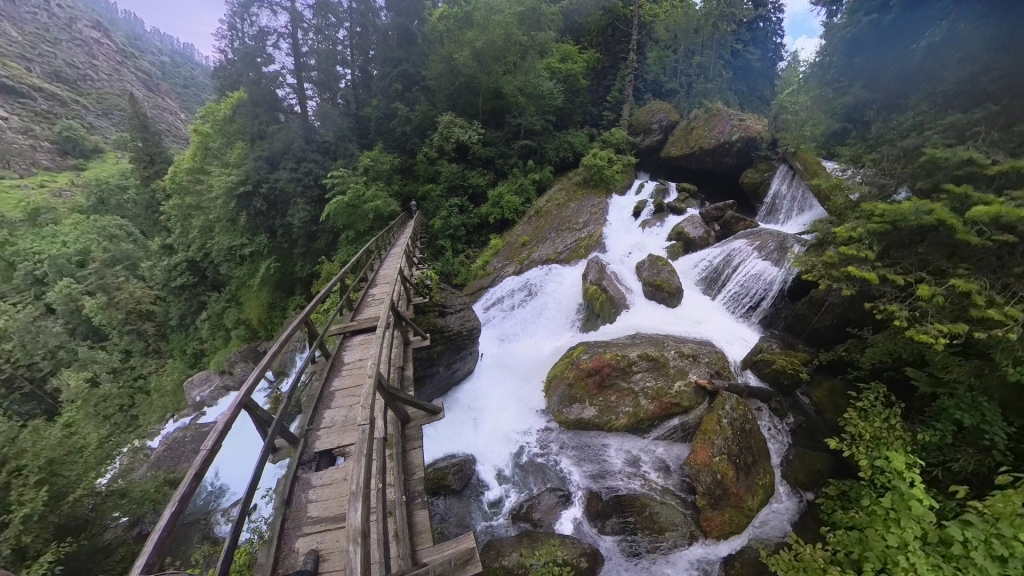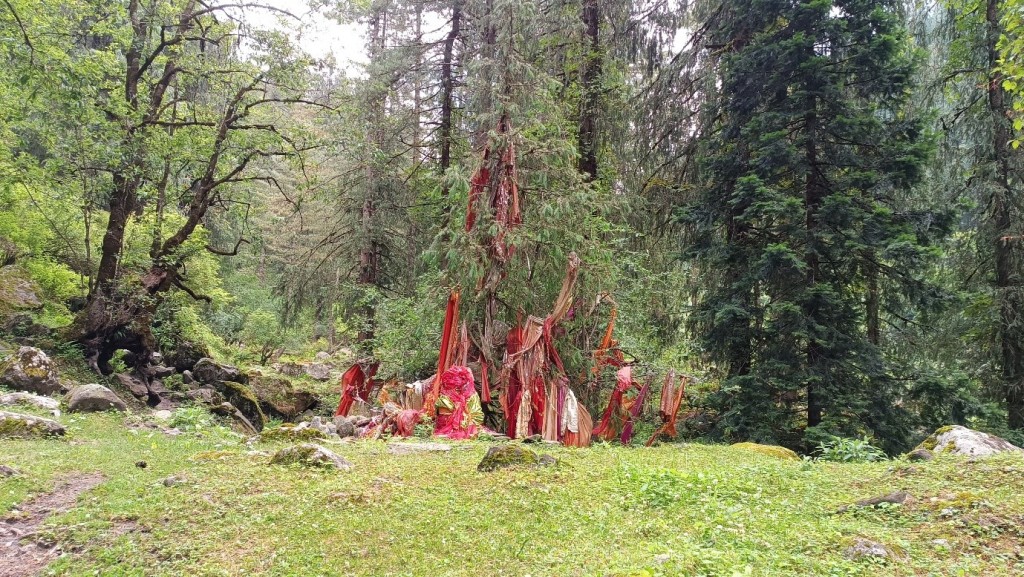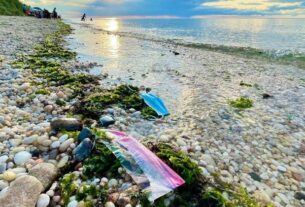Aashna Sharma, Associate Editor mentee for Journal of Applied Ecology, recently embarked on a fieldtrip to the Himalayas. In this stand-alone blog post, she details hers and research colleagues’ full experience, told alongside videos and photographs from the field.
Introduction
Fieldwork is inherent for wildlife researchers, a daily delight! Working in immaculate landscapes such as the Himalaya comes as a blessing and research stipends become bonuses for doing what we already love!
During my doctorate, fieldwork in Himalayan rivers kindled the curious scientist in me. Amidst drenched bags, leech bites, tough treks, and near landslides, I witnessed the weeness of our thoughts, and the profoundness of our endurance – both physical and mental. Every few kilometers are folklores seeming to offer mystical hints to how we and the wilderness are intricately connected.
As a mentee Associate Editor for Journal of Applied Ecology since April 2023, I’ve seen firsthand how outstanding applied research stems from exceptional fieldwork. Below is a glimpse of one such expedition, filled with experiences, data collection, and unexpected challenges.
Why the Himalayas?
As part of an ongoing project at the Wildlife Institute of India (WII) I, with my three colleagues, began fieldwork in the Great Himalayan National Park Conservation Area (GHNPCA) this June. Our two main tasks where:
- to explore two river basins
- undergo a strenuous 90 km trek – 3,300 to 14,760 feet in just five days!
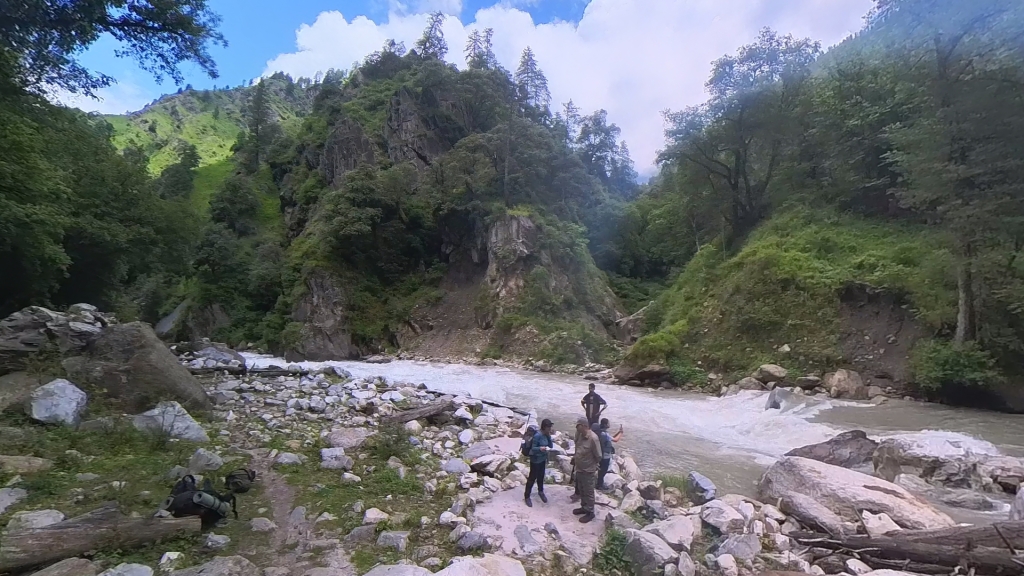
We are primarily climate biologists, and tracking climate was the very idea behind this fieldwork. Our key aim: to deploy data loggers for hourly temperature records in Himalayan rivers, something which would be a first of its kind in this study area.
The process
Initial challenges
Starting at GHNPCA, we scouted out river segments for a fall deployment. Unexpectedly, flashfloods and fluctuating flows hindered logger anchorage on boulders. On top of this, a nearby monsoon was knocking on the door!
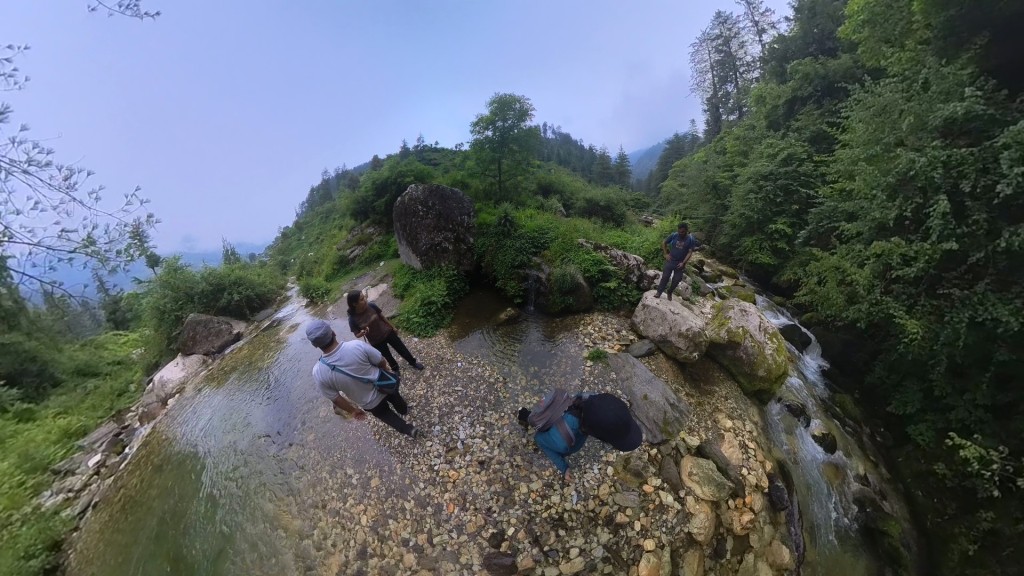
Although it was a reconnaissance on ‘where to deploy’, things capsized into ‘how to deploy’. Boulder crevices breaking off made drilling futile, and logs in streams became highly vulnerable to potentially being swept away by flashfloods.
“A narrow window,” Vineet stressed.
We had to deploy loggers before the monsoon hit. Testing our strategy in challenging river conditions and downpours was necessary.
Deploying data loggers
“Will drilling onto this log secure them?” I questioned, as Himangshu and Meghavi inspected the supporting boulders.
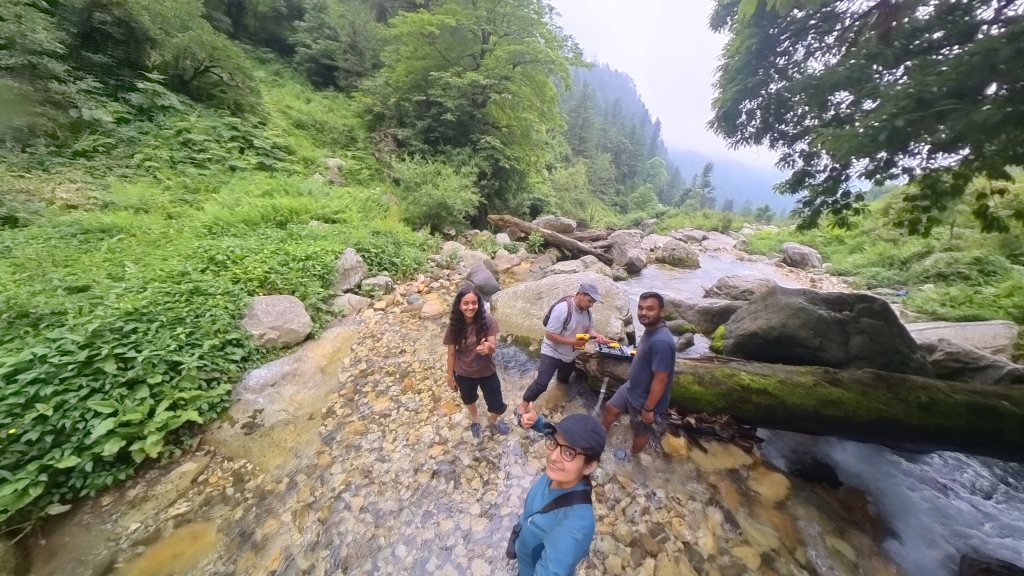
Our loggers, recording hourly temperatures at 200+ sites, will yield pioneering scientific data to map thermal habitats of elusive fish species in Himalayan streams.
In the uncharted Sainj River of GHNPCA, we sought prime logger sites. Originating from the revered Raktisar glacier, Sainj holds deep local religious significance.
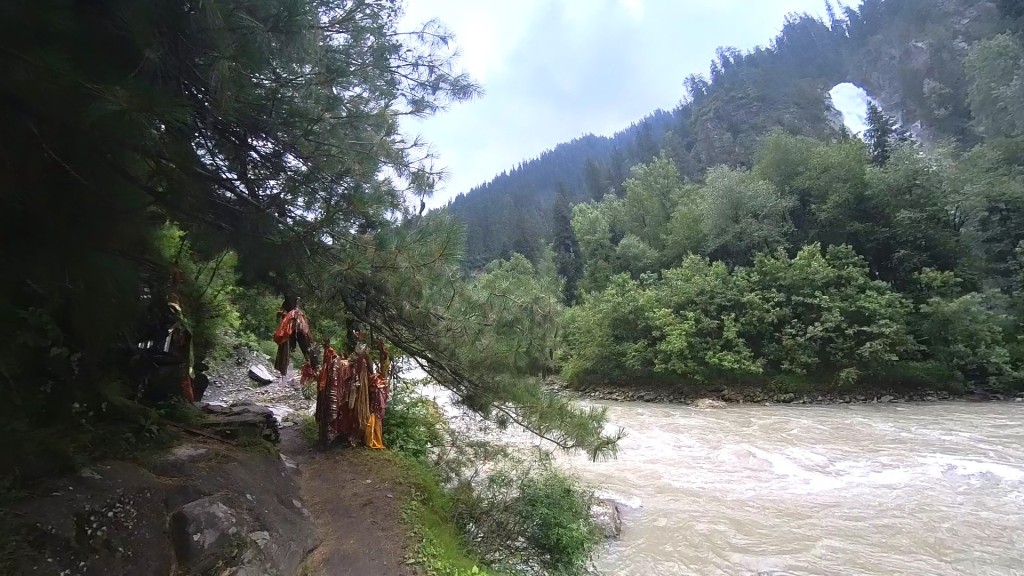
Daily, the lingering question was, “How do we deploy them here?” The roaring river below echoed its turbulence, a constant presence along the ridgeline.
Changes to our plans
Future deployment spots were chosen, but an urgent message arrived:
“Return immediately, weather’s turning risky.”
We were 40 kms deep into the hills, far from the last road connection point.
Cancelling the last two days of hiking, we turned back. Rain soaked my bag and rucksack. We had one more night of camping before we’d reach the road. While such desolate terrains might open a Pandora’s box of challenges for some, a wildlife researcher such as myself yearns for them.
Descending, we saw another holy tree. For many the local deities, or as we call them the ‘devatas’, are a mystery wrapped in enigma. Their presence adds a profound mysticism to these riverscapes and deepened my scientific instincts to know Himalaya more with every field day that I spent there.
Reaching the base
Reaching the basecamp, weather predictions indicated that there’d be a short respite from rainfall – a whole two-day window! We quickly decided on the deployment of ten more loggers.
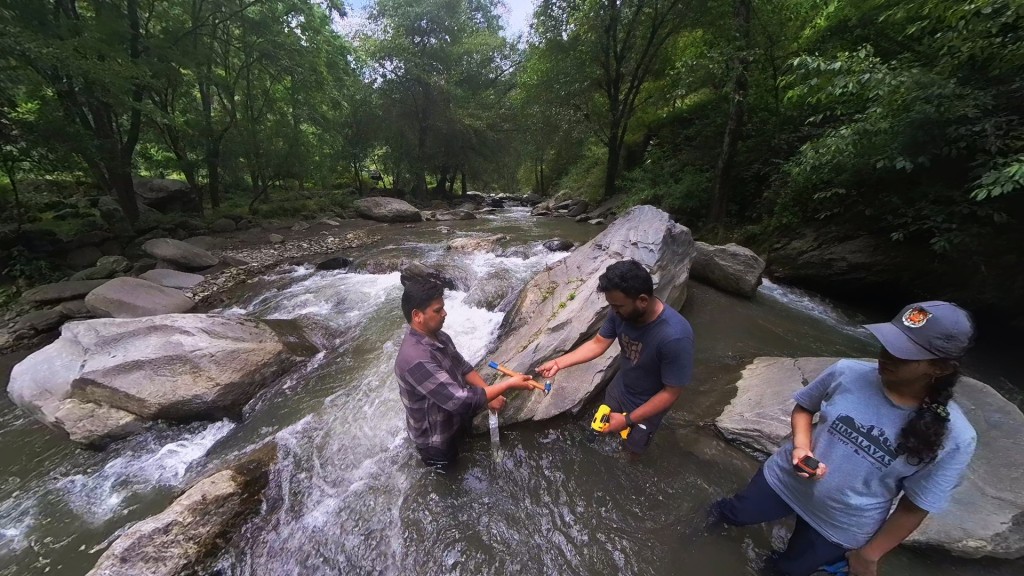
Upon completion, we rushed back to headquarters after an overnight journey. By then, news had flooded in about landslides and record river surges hitting GHNPCA! Astonishingly, a bridge we had crossed washed away shortly after. A timely end to our fieldwork… perhaps the ‘devatas’ had our backs!

We plan on returning to the area post-monsoon to evaluate our deployment technique. Fingers crossed for success!
Aashna is one of five mentees involved in our Associate Editor mentoring scheme. You can find out more about the scheme here, and read more about this year’s cohort here.
***Applications for the 2024 AE Mentoring Scheme are now open. Find out more information on how to apply here***
